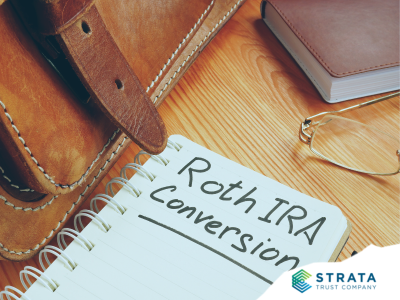If you have a SEP IRA, there are upcoming deadlines to be aware of. October 17, 2022, is the deadline to establish a Simplified Employee Pension (SEP) retirement plan and make a contribution for the 2021 tax year for sole proprietors, LLCs, and incorporated businesses operating on a calendar year.1 Here is a rundown of SEP Plans and contributions for 2021 and 2022.
SEP Plan Overview
A SEP plan is a business-sponsored retirement plan that allows you to deduct your plan contributions and put your savings to work – tax-deferred – in your self-directed IRA. Your SEP plan contributions are deposited in your IRA (sometimes called a SEP IRA), which allows you to invest up to 25% of your income each year in any investments permitted by your IRA custodian. With contribution limits this large, a SEP plan can be an effective way to reduce your tax liability and build your self-directed IRA balance.
All types of companies can establish a SEP plan. All you need to be eligible to contribute is net earnings from self-employment in which you perform personal services to the business. Plan establishment and contributions are due by your business’s tax-filing deadline, including extensions.
You’re not required to contribute to the plan in any year, and when you choose to contribute, you can vary the amount from year to year. However, if your business has employees and you choose to make a SEP plan contribution for the year, you must make contributions for all employees who meet the eligibility requirements you chose for your plan.2 Contributions must be the same percentage of compensation for every employee, including yourself. These contributions are tax-deductible for your business. The IRS requires that you notify your employees when you establish a SEP plan and again within 30 days after making a SEP contribution.
SEP contributions cannot be made to Roth IRAs, but you can still make a regular contribution to your Traditional or Roth IRA in the same year as you make a SEP plan contribution. Just be aware that participating in a SEP plan may affect your or your spouse’s eligibility to take a tax deduction for a regular IRA contribution, depending on your level of income.
If you don’t already have a SEP plan, you can easily establish one by completing a short document, which you can obtain from your IRA custodian, called IRS Form 5305-SEP. Access STRATA’s SEP plan documents here.
2021 Contributions
Once you have a SEP plan established, you can contribute up to 25% of your compensation or $58,000 for 2021, whichever amount is smaller. Just like other tax-qualified retirement plans, however, contributions can only be based on compensation up to the annual “compensation cap” for the year. This amount is $290,000 for 2021.
If you earn W-2 wages from your company, the calculation is simple:
- If you earned $100,000 compensation in 2021, your maximum SEP plan contribution would be $25,000 (the lesser of $58,000 or 25% of $100,000).
- If you earned $300,000 compensation in 2021, your maximum SEP plan contribution would be $58,000 (the lesser of $58,000 or $72,500 – 25% of compensation up to the annual cap of $290,000).
Calculating the maximum deductible SEP contribution for self-employed individuals who do not have W-2 income is more complex. Your contribution is calculated using your net earnings from self-employment, which takes into account the deduction for a portion of your self-employment tax and for your SEP plan contribution. This means that the deduction for your SEP plan contribution and your net earnings depend on each other. Many self-employed individuals seek professional tax advice when making this calculation. You can find more information and a worksheet in IRS Publication 560, Retirement Plans for Small Businesses.
To make a SEP contribution, simply deposit money into your IRA (and your employees’ IRAs if applicable) and inform the IRA custodian that you are making a SEP plan contribution. Once the cash is in the IRA, the IRA owner can invest, transfer, and distribute it at any time – just as with other IRA assets. You can make a SEP contribution directly to your self-directed IRA, and you can transfer or roll over existing SEP IRA assets to your self-directed IRA. There are no restrictions on moving or distributing SEP assets.
2022 Contributions
Once you have a SEP plan, you don’t have to establish another one or fill out documentation each year unless you want to amend your employee eligibility requirements, or the IRS requires an updated plan document. For 2022, the contribution limit increases to 25% of your compensation or $61,000, whichever amount is smaller. The compensation cap for 2022 increases to $305,000. If you operate a calendar-year sole proprietorship and you want to make a SEP contribution for 2022, you have until October 15, 2023, with a tax-filing extension, to make the contribution.
Next Steps
The option to contribute and how much to contribute each year gives business owners great flexibility, making SEP plans particularly well-suited for start-up companies or other businesses with significant fluctuations in profits. A SEP plan is also easy to establish and maintain. It’s not too late to fund a SEP plan for 2021 or get a head start on funding for 2022. Talk to your financial advisor or tax professional to make sure you understand the contribution potential based on your business income. You may also contact our self-directed IRA experts with questions about funding a self-directed IRA through a SEP plan.
1Partnerships must file a tax return by March 15 with a possible extension to September 15. The deadline for filing tax returns and completing other tax-related acts have been extended in certain states with recent natural disasters. See the IRS website for more information: https://www.irs.gov/newsroom/tax-relief-in-disaster-situations
2Possible options include reaching a certain age (up to 21), working for you in at least three of the last five years, and earning at least $650 from the business in the current year.














